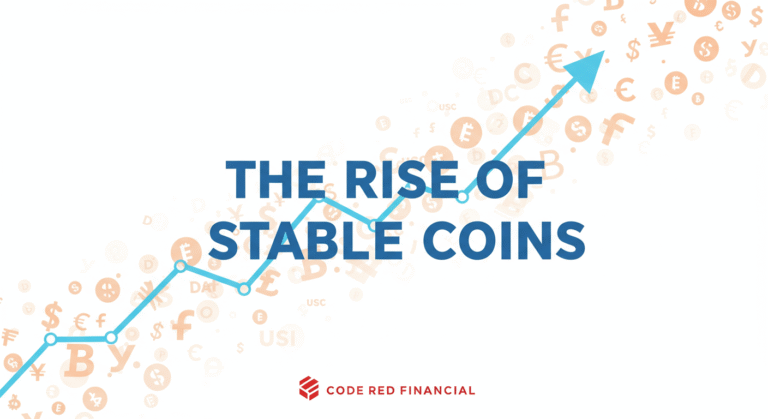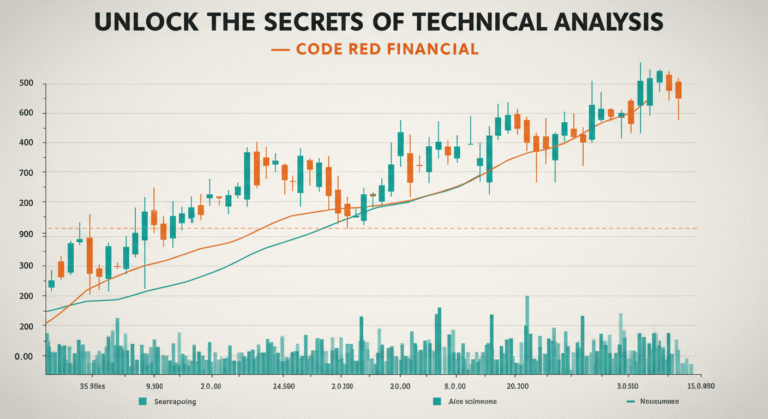
What is a Cryptocurrency ICO?
A Cryptocurrency Initial Coin Offering (ICO) is a fundraising mechanism utilized by startups to raise capital for new cryptocurrency projects. By issuing digital tokens, these projects offer potential investors a means to contribute funds in exchange for tokens that may increase in value as the project develops. The concept has gained prominence as blockchain technology has matured, providing an innovative way for companies to attract attention and secure financing.
The ICO process typically begins with the creation of a comprehensive white paper, which outlines the project’s objectives, technology, and vision. This document serves as a key marketing tool, presenting vital information to potential investors regarding the purpose of the ICO, its utility, and the project’s development roadmap. A well-structured white paper is essential, as it influences investor confidence and participation.
Following the publication of the white paper, the project team will deploy smart contracts on a blockchain platform, ensuring the transparent management of token sales. Smart contracts automate the funding process, enforcing the terms of the ICO and facilitating the distribution of tokens to investors after funds are raised. This automation reduces the need for intermediaries, thereby lowering transaction costs and enhancing the security of the fundraising effort.
The timeline of an ICO usually comprises several key phases, including the announcement, the presale (if applicable), and the main sale of tokens. During the announcement phase, marketing campaigns and community engagement activities are initiated to generate interest. The presale phase may offer initial investors discounted tokens to encourage early contributions. Finally, the main sale occurs, where tokens are available to a broader audience, marking an opportunity for significant capital influx for the startup.
In summary, cryptocurrency ICOs represent an innovative approach for startups to raise funds while offering investors potential rewards through the acquisition of digital tokens. Understanding the structure and process of ICOs is crucial for anyone considering participation in this evolving entrepreneurial landscape.
The Process of Participating in an ICO
Participating in an Initial Coin Offering (ICO) can be a promising avenue for investors seeking exposure to new cryptocurrency projects. However, it is essential to follow a structured process to effectively mitigate risks while maximizing potential rewards. The first step involves identifying a reliable ICO. This requires thorough research, including examining the project’s whitepaper, team background, and community sentiment. Utilize reputable sources, forums, and platforms that aggregate information on upcoming ICOs to validate the legitimacy of the project.
Once a promising ICO has been selected, understanding the specific terms and conditions is crucial. Investors should review details such as the token distribution model, the funding goal, and the utility of the tokens within both the current ecosystem and possible future applications. Knowledge of compliance regulations and the legal framework surrounding the ICO is also necessary to ensure that participation aligns with local laws.
Next, creating a cryptocurrency wallet is a vital preparation step. Investors should select a wallet that supports the ICO’s token standards, such as ERC-20 for Ethereum-based tokens. Ensure that the wallet is secure and that private keys are stored safely, as they are integral to accessing purchased tokens. After setting up the wallet, potential investors must fund it with the necessary cryptocurrency, typically Bitcoin or Ethereum, depending on what the ICO accepts.
As the ICO date approaches, keep in mind the timelines set by the project. Participation often includes adhering to strict deadlines for token purchases, particularly in time-limited offerings. Being prepared with appropriate funds and having all necessary steps completed prior to the ICO commencement can greatly enhance participation success. By following these outlined steps diligently, investors can improve their chances of successfully engaging in the ICO process.
Assessing Risks Associated with ICOs
Investments in Initial Coin Offerings (ICOs) presents a unique opportunity for cryptocurrency enthusiasts, yet it also carries significant risks that investors must carefully consider. One of the primary risks associated with ICOs is regulatory uncertainty. The legal status of ICOs varies by jurisdiction, and regulatory bodies are still developing frameworks to govern these offerings. As a result, investors might face sudden changes in the legal landscape that could render their investments worthless or subject to legal consequences.
In addition to regulatory risks, the prevalence of scams and fraudulent schemes in the ICO space is concerning. Numerous projects have been launched with misleading information or outright deceit, resulting in financial losses for unsuspecting investors. Conducting thorough due diligence is vital; potential investors should seek transparency regarding the project’s team, whitepaper, and roadmap to avoid falling victim to scams. Look for established and credible teams with a history in the cryptocurrency or technology sectors, as this can serve as a critical indicator of a project’s legitimacy.
Market volatility is another factor that contributes to the risks associated with ICOs. The cryptocurrency market is notoriously unstable, with prices subject to rapid fluctuations that can lead to significant financial losses. Investors must not only be aware of the project they are placing their funds in but also the wider market trends that could impact the value of their holdings. Additionally, the risk of project failure is ever-present; many ICOs do not achieve their intended milestones or fail altogether due to a variety of reasons such as inadequate funding, technical difficulties, or lack of user adoption.
To navigate these risks effectively, investors should stay informed and vigilant, recognizing the red flags that could indicate potential pitfalls. Conducting thorough research, analyzing market trends, and evaluating the project’s fundamentals can provide insights that reduce exposure to the inherent risks of ICO investment.
Criteria for Evaluating an ICO
When considering an Initial Coin Offering (ICO) as a potential investment opportunity, it is paramount to assess various criteria that could influence its likelihood of success. One of the foremost aspects to scrutinize is the team behind the project. A skilled and experienced team often indicates a higher probability of achieving the project’s goals, thus increasing the ICO’s potential. Investigation into the team’s background, previous projects, and expertise in relevant fields can provide valuable insights into their capability to execute the proposed vision.
Another critical factor to evaluate is the problem that the ICO aims to address. A robust problem-solution fit is essential for any successful project. An ICO that targets a significant, unresolved issue within its industry generally carries more weight than one that lacks a clear purpose. By examining the validity and relevance of the problem the project seeks to solve, an investor can gauge the ICO’s actual utility and market potential.
Furthermore, the underlying technology should be scrutinized. Investors should ascertain whether the technology is innovative and scalable, and whether it has been thoroughly developed or tested. The credibility of the technology can greatly affect the overall success of the project and, consequently, the chosen ICO. Community support is another major determinant; active and engaged communities often provide essential feedback, promote the project, and contribute to its overall adoption.
Lastly, analyzing tokenomics—the economic model of the ICO—plays a crucial role in evaluating its investment viability. This includes understanding the utility of the token, its distribution mechanism, and any incentives for holding rather than selling the token. By thoroughly assessing these criteria, investors can better differentiate between promising ICOs and potential scams, leading to more informed decision-making within this volatile market.
Successful ICOs: Case Studies
Initial Coin Offerings (ICOs) have become a critical mechanism for startups in the cryptocurrency sector to raise funds and foster innovation. Among the multitude of ICOs launched, some have emerged as notable success stories, significantly impacting the cryptocurrency landscape. This section examines three prominent ICOs: Ethereum, Binance Coin, and Tezos, highlighting their goals, funding outcomes, and the overarching effects they have had on the digital currency ecosystem.
Ethereum’s ICO, conducted in 2014, raised approximately $18 million in Bitcoin, marking it as one of the largest fundraising events at the time. The project introduced the concept of smart contracts, enabling decentralized applications on its blockchain. Ethereum’s successful ICO not only provided the necessary capital for development but also laid the foundation for a robust ecosystem of decentralized finance (DeFi) applications and non-fungible tokens (NFTs), thus transforming the digital asset landscape.
Another significant example is Binance Coin (BNB), launched through an ICO in 2017. The Binance exchange aimed to create a utility token to facilitate trading and reduce transaction fees. The ICO generated around $15 million, and since then, BNB has evolved, providing users with various benefits on the platform. The strategic growth of Binance as a major cryptocurrency exchange has propelled BNB’s value, demonstrating how a well-planned ICO can spawn a successful underlying operation model and enhance user engagement.
Tezos, which held its ICO in 2017, raised an impressive $232 million to maintain a self-amending blockchain capable of evolving. This ambitious goal attracted significant interest, although it faced challenges in the legal domain. Despite these hurdles, Tezos has developed a robust community and governance model that enables holders to vote on protocol upgrades, reflecting an innovative approach to blockchain governance.
Through these case studies, key factors contributing to the success of ICOs become evident, including a clear project vision, effective community engagement, and addressing real-world problems with innovative solutions. By examining both Ethereum, Binance Coin, and Tezos, prospective project creators can glean valuable insights into shaping their own ICO strategies for successful fundraising and sustainable growth.
The Future of ICOs in the Cryptocurrency Market
The landscape of the cryptocurrency market is continually evolving, and Initial Coin Offerings (ICOs) play a pivotal role in this transformation. As regulatory frameworks around the world tighten and mature, ICOs are adapting to these changes to forge a path for potential success and sustainability. One notable trend is the increasing emphasis on compliance and investor protection, resulting in a gradual shift towards more regulated offerings. This regulatory scrutiny, while initially perceived as a hurdle, can enhance the credibility of ICOs, potentially attracting more institutional investors in the future.
In addition to regulatory advancements, technological innovations are significantly shaping the future of ICOs. The emergence of Initial Exchange Offerings (IEOs) provides a new alternative for project fundraising, allowing for the sale of tokens directly through cryptocurrency exchanges. This method not only affords projects immediate access to a broader audience but also instills a level of trust, as exchanges typically conduct preliminary due diligence on the projects before listing them. As IEOs gain traction, traditional ICOs may need to adapt their models to remain relevant and competitive in the fundraising ecosystem.
Moreover, the integration of blockchain technology continues to facilitate more transparent and secure fundraising mechanisms. Smart contracts, which automate transaction processes, reduce the chances of fraud and enhance operational efficiency for ICOs. By harnessing the capabilities of blockchain, projects can provide real-time insights into their funding statuses, fostering trust among investors. In response to emerging challenges, ICOs may implement hybrid structures, blending elements of ICOs and IEOs to unlock new opportunities for funding.
As the market develops, ICOs must not only embrace these innovations but also respond proactively to emerging risks and market demands. By adapting to regulatory changes, leveraging new technologies, and focusing on transparency, ICOs can carve out a sustainable niche in the cryptocurrency fundraising landscape.
Final Thoughts: Should You Participate in an ICO?
In light of the information discussed regarding Initial Coin Offerings (ICOs), it is imperative for potential investors to evaluate their individual circumstances carefully before deciding to participate. At the core of this decision-making process lies an assessment of personal risk tolerance. ICOs are notably volatile and can present significant financial risks. Investors should gauge their willingness to absorb potential losses versus their desire for high returns. Understanding this aspect is essential in framing a realistic investment outlook.
Additionally, adopting appropriate investment strategies is vital when engaging in ICOs. A diversified portfolio can mitigate risks associated with a single ICO. By spreading investments across multiple projects, investors can minimize exposure to any one asset’s volatility. This strategic approach encourages a balanced consideration of both established cryptocurrencies and emerging tokens, cultivating a well-rounded investment profile.
Furthermore, ongoing education is crucial in an environment that constantly evolves. The cryptocurrency landscape is characterized by rapid innovation and frequent technological advancements, which can significantly influence market dynamics. Staying informed about regulatory changes, technological developments, and market trends empowers investors to make sound decisions. Resources such as blogs, webinars, and forums provide valuable insights, but it is important to verify the credibility of sources to avoid misinformation.
To wrap it up, diving into an ICO can be pretty exciting, but let’s not forget it’s also packed with risks. Getting a solid grip on how much risk you’re cool with, spreading your investments, and never stopping learning are key to smart investments in ICOs. Stick to these rules, and you’ll be better equipped to deal with the twists and turns of the crypto world and make some savvy investment moves.
Disclaimer: This article is for informational purposes only and should not be considered financial or investment advice. Investing in any of the mentioned passive income streams involves risk, and you could lose money. Before making any investment decisions, it is essential to conduct your own thorough research and consider consulting with a qualified financial advisor who can assess your individual financial situation, risk tolerance, and goals. The potential returns discussed are illustrative and not guaranteed. Market conditions, regulations, and other factors can significantly impact the performance of any investment or business venture.







